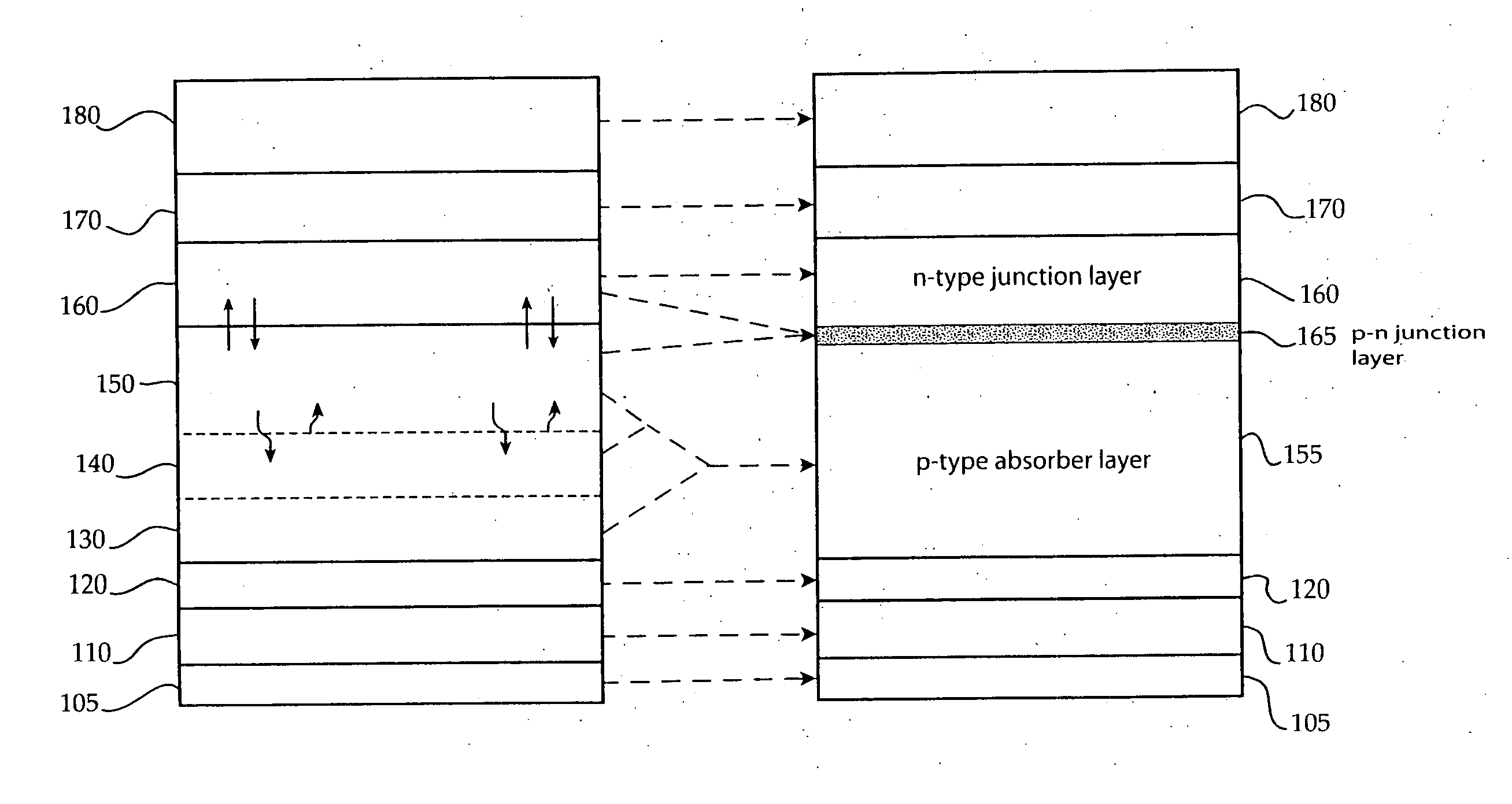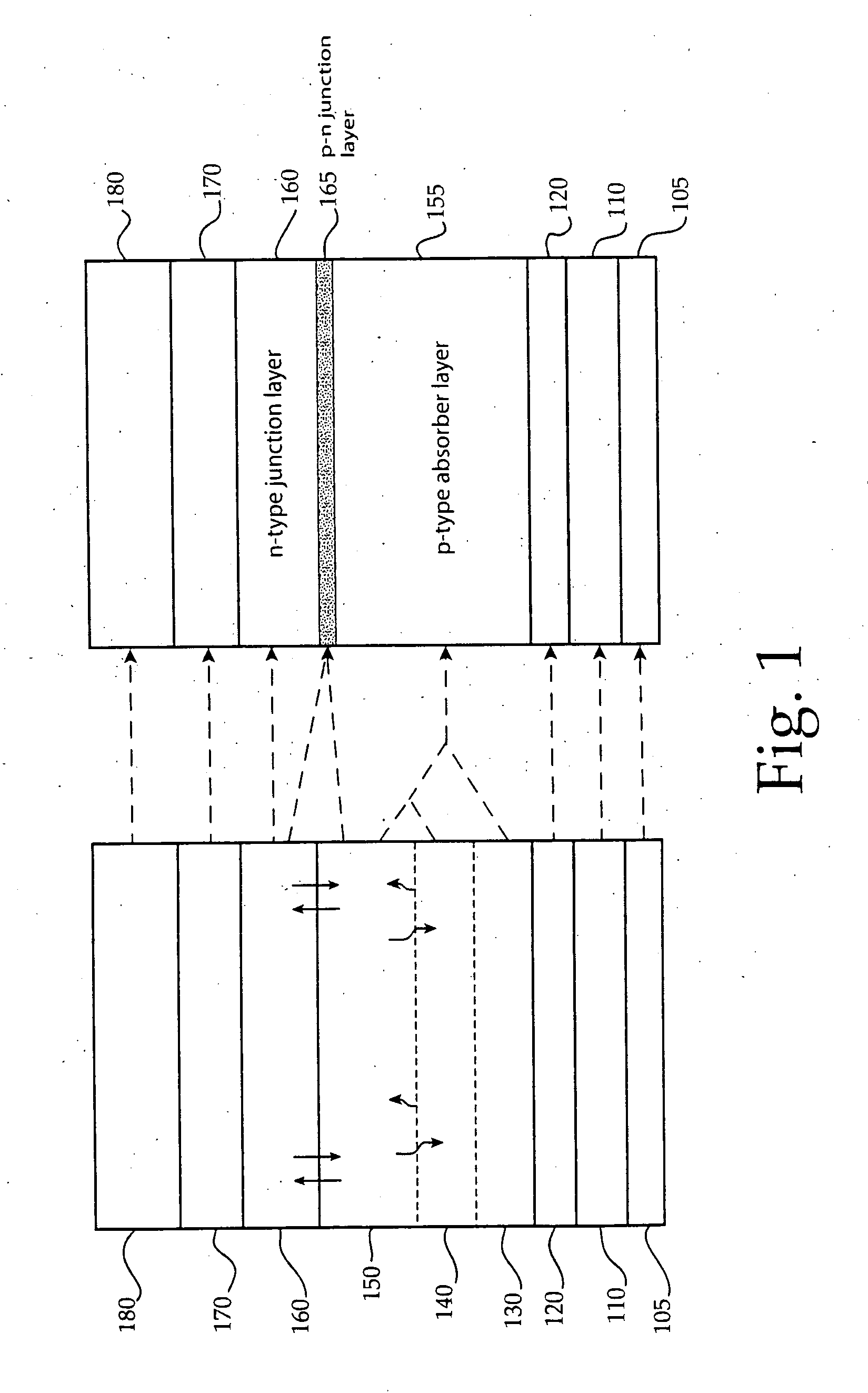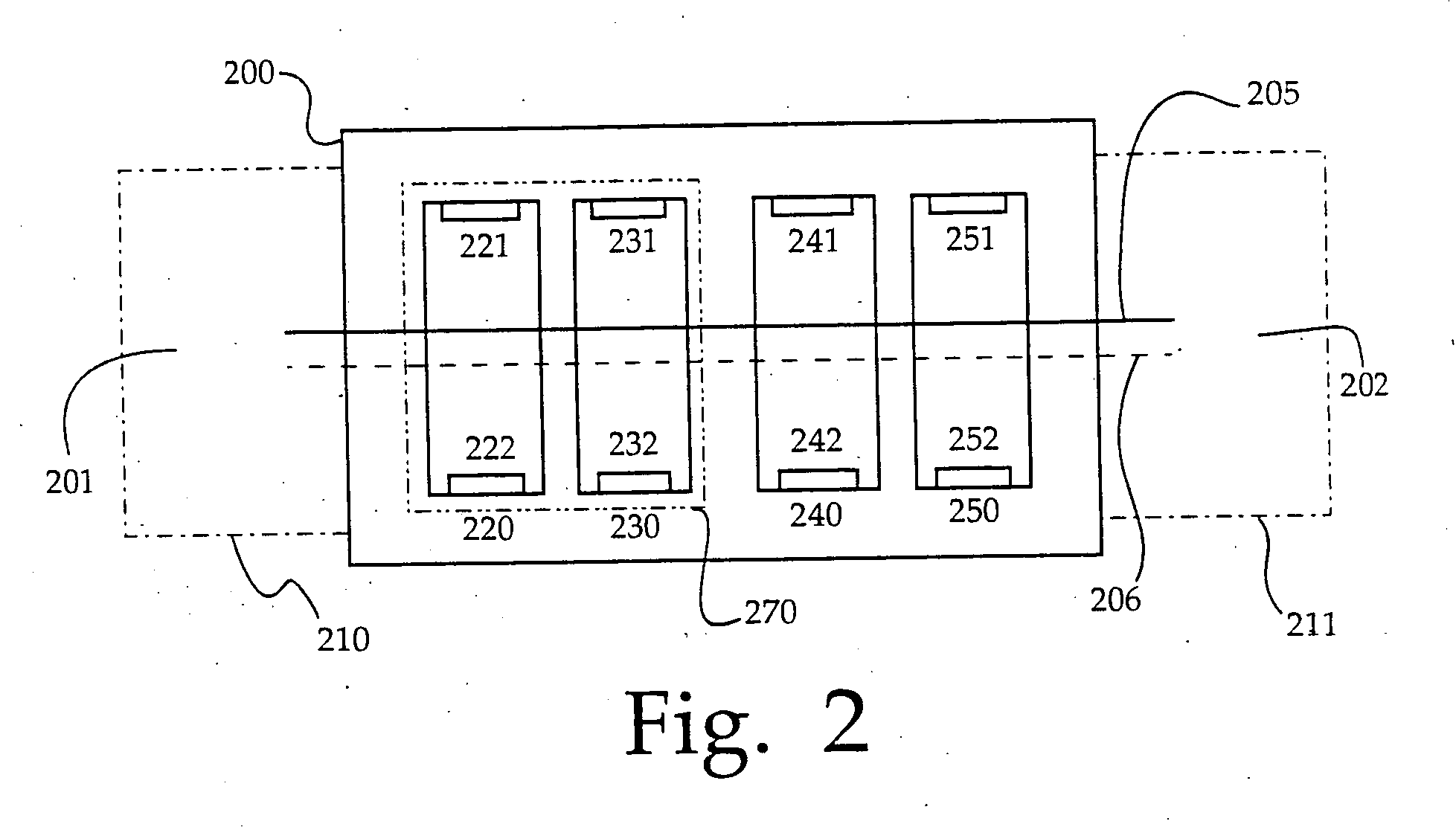Vertical production of photovoltaic devices
a production line and photovoltaic technology, applied in the field of photovoltaic device manufacturing, can solve the problems of devices not being a viable commercial product, lack of production reliability, and insufficient reflection of the benefits of renewable energy in the market pri
- Summary
- Abstract
- Description
- Claims
- Application Information
AI Technical Summary
Benefits of technology
Problems solved by technology
Method used
Image
Examples
Embodiment Construction
General Photovoltaic Stack Designs
[0024] The present invention employs a new production apparatus to produce photovoltaic devices. Of course, the particular apparatus will depend upon the specific photovoltaic device design, which can be varied.
[0025] Viewing FIG. 1, all layers are deposited on a substrate 105 which may comprise one of a plurality of functional materials, for example, glass, metal, ceramic, or plastic. Deposited directly on the substrate 105 is a barrier layer 110. The barrier layer 110 comprises a thin conductor or very thin insulating material and serves to block the out diffusion of undesirable elements or compounds from the substrate to the rest of the cell. This barrier layer 110 may comprise chromium, titanium, silicon oxide, titanium nitride and related materials that have the requisite conductivity and durability. The next deposited layer is the back contact layer 120 comprising non-reactive metals such as molybdenum. The next layer is deposited upon the b...
PUM
| Property | Measurement | Unit |
|---|---|---|
| temperature | aaaaa | aaaaa |
| translational speed | aaaaa | aaaaa |
| pressure | aaaaa | aaaaa |
Abstract
Description
Claims
Application Information
 Login to View More
Login to View More - R&D
- Intellectual Property
- Life Sciences
- Materials
- Tech Scout
- Unparalleled Data Quality
- Higher Quality Content
- 60% Fewer Hallucinations
Browse by: Latest US Patents, China's latest patents, Technical Efficacy Thesaurus, Application Domain, Technology Topic, Popular Technical Reports.
© 2025 PatSnap. All rights reserved.Legal|Privacy policy|Modern Slavery Act Transparency Statement|Sitemap|About US| Contact US: help@patsnap.com



